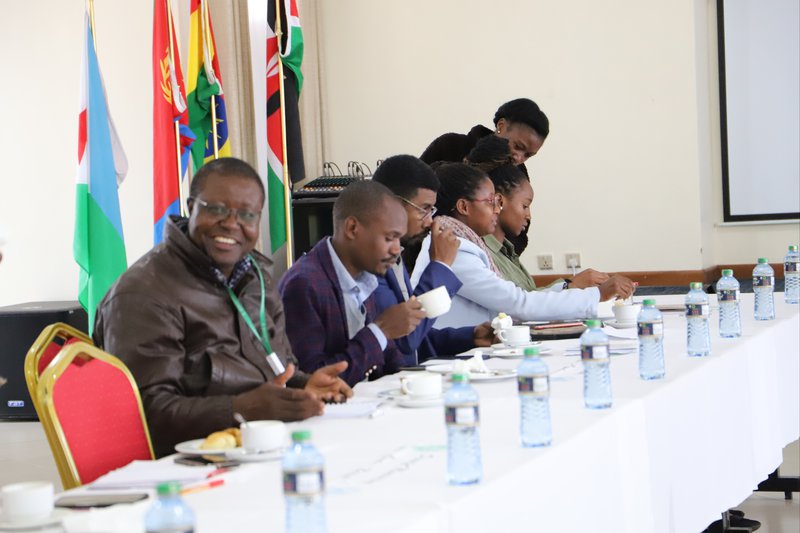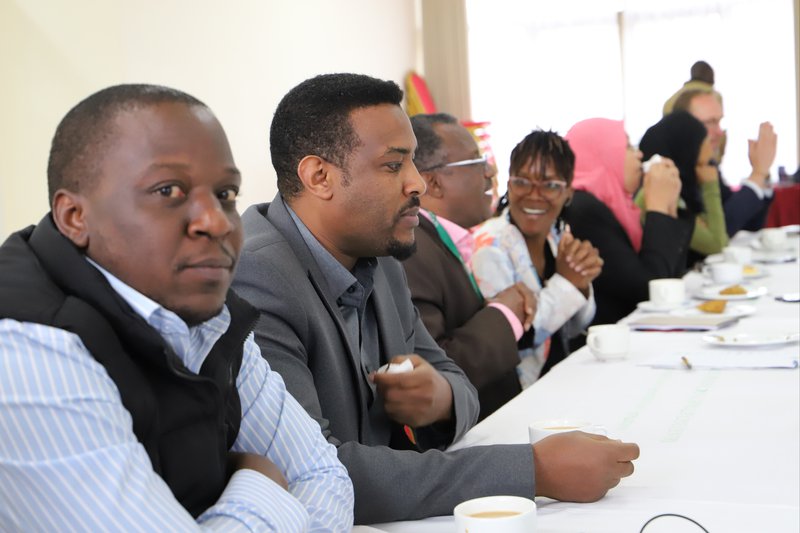The start of the rainy season, was it?
The onset is a time of renewal, as farmers eagerly prepare their fields for planting, herders guide their livestock to greener pastures.

By Alexia Kioko and Melissa Ouya
The onset in East Africa marks the eagerly anticipated transition from the dry season to the wet season, heralding a dramatic transformation in the region's landscape and livelihoods. Typically occurring between March and May, this climatic shift brings relief to parched lands and a burst of life to the arid plains. As the moisture-laden winds from the Indian Ocean converge with the warm air over the continent, they unleash powerful rains that nourish the soil and replenish water sources. The onset is a time of renewal, as farmers eagerly prepare their fields for planting, herders guide their livestock to greener pastures, and communities come together to celebrate the much-needed arrival of water, a source of life and vitality in this part of the world. It is a season of hope, optimism, and agricultural abundance in East Africa. East Africa is known for its distinct rainy and dry seasons, influenced by the Indian Ocean and various climatic phenomena like the Indian Ocean Dipole (IOD) and the El Niño Southern Oscillation (ENSO). The onset of rainfall in East Africa varies depending on the specific region within the area and the prevailing climate patterns. The variability in these patterns is influenced by the Indian Ocean, local geography, and global climate phenomena like El Niño and La Niña, underscoring the importance of understanding these factors for effective resource management and adaptation strategies.
The Down to Earth seminars have proven to be a source of coherence and partnerships between other projects at our research institution therefore the 4th ‘Can we Talk?” seminar was led by the Co-production of Climate Services for East Africa (CONFER) project. The seminar commenced with a brief dramatic visualization illustrating the community's viewpoint on the concept of "onset" and the extent of reliance placed on onset predictions with the theme “START OF THE RAINY SEASON, WAS IT? ” held on the 10th August 2023, brought out an interesting conversation on the definitions of onset, onset days and onset length.

Amidst the unforgiving grip of the dry season, a poignant lament reverberates through the parched landscape, as the agony of a young farmer finds voice: "Surely, now what is this? The ground is drying! The animals are dying! We have no water! We are really suffering!" It is a soul-wrenching cry, encapsulating the brutal realities of a region plagued by water scarcity. This plaintive outcry serves as a prelude to the focal point of their collective anticipation: the arrival of the rainy season. Yet, skepticism looms like a shadow, and a common refrain echoes through the farming communities: "But do we really trust these predictions?" Trust in weather forecasts, often vital for planning, remains a tenuous thread. The concept of "onset" assumes a multifaceted dimension, its definition ever-shifting, contingent on diverse sectors and intricate variables. In the realm of agriculture, the notion of onset is paramount. Maize seeds are sown before the onset, banking on the anticipated rains to sustain their growth, while beans find their place in the soil after the heavens have unfurled their life-giving waters. The onset, thus, becomes more than a meteorological event; it is the fulcrum upon which livelihoods balance, and the lifeline that brings hope to the dry heartlands.
MATTERS ARISING
The anticipation of onset predictions is undoubtedly a crucial facet of community planning, particularly in agricultural contexts. However, it is essential to recognize that the potential for false onset forecasts and the presence of inherent uncertainties can cast a shadow of doubt and disruption over these preparations. Within initiatives like ICPAC's "Down To Earth" project, community engagement takes center stage, employing methodologies like Participatory Scenario Planning. These collaborative efforts occur approximately 21-30 days prior to the anticipated onset. Yet, during this critical pre-onset period, the vulnerabilities and uncertainties in onset predictions can significantly impact trust and planning. False onset forecasts may lead to premature agricultural activities and resource allocation, resulting in financial losses and reduced food security.
The significance of ongoing climate services engagement, particularly at the grassroots community level, cannot be overstated when it comes to enhancing the validation and accuracy of monthly and weekly climate services, as opposed to relying solely on seasonal forecasts. While seasonal forecasts provide vital long-term insights, they often come with inherent uncertainties, making them less reliable for short-term decision-making. Continuous engagement with communities not only fosters trust and credibility but also allows for real-time validation of climate information through on-the-ground observations. This direct feedback loop aids in fine-tuning and calibrating climate services to the specific needs and realities of the community, leading to more accurate and actionable information. Moreover, it empowers local residents to adapt swiftly to changing weather patterns and promotes climate-resilient practices, ultimately bolstering the community's ability to thrive in the face of a variable and unpredictable climate.
Climate information, while indispensable, is just one piece of the puzzle when it comes to building resilience in communities facing the challenges of a changing climate. To create effective and holistic resilience strategies, it is crucial to foster partnerships with both donors and stakeholders. These collaborations should take into account the diverse and unique needs of all genders, ensuring that the vulnerabilities of all community members are fully understood. By recognizing the different roles, responsibilities, and experiences of men, women, and non-binary individuals, these partnerships can develop targeted interventions that address the specific challenges faced by each gender. This inclusive approach not only enhances the accuracy and relevance of resilience-building initiatives but also promotes social equity and empowerment within the community. It is through such comprehensive efforts that we can truly create resilient communities capable of withstanding the multifaceted impacts of a changing climate.
This prompts us to ponder a series of critical questions: Do we possess a clear understanding of what constitutes adequate soil moisture for successful germination? Could this information be transformed into a valuable product for our users? In the broader context of infrastructure and community resilience, is this a pursuit that aligns with ongoing development efforts? Furthermore, should we contemplate redefining the very concept of "onset," potentially considering a range of days rather than rigid exact dates, in order to enhance its practical utility? These inquiries illuminate the path forward as we navigate the intricate nexus of climate science, community engagement, and sustainable development.
CONCLUSION
As the discussion reached its conclusion, a noteworthy suggestion emerged: the imperative need to establish the climatology of onset dates in Kajiado County, a region housing ICPAC, with its inherent variability. In this context, embarking on the implementation of PSPs (Participatory Scenario Planning) for Kajiado County holds immense potential, thanks to our proximity to the community and the ease of access to its beneficiaries. It was suggested that the next monthly Can we Talk Seminar be held on 24th August, 2023.
